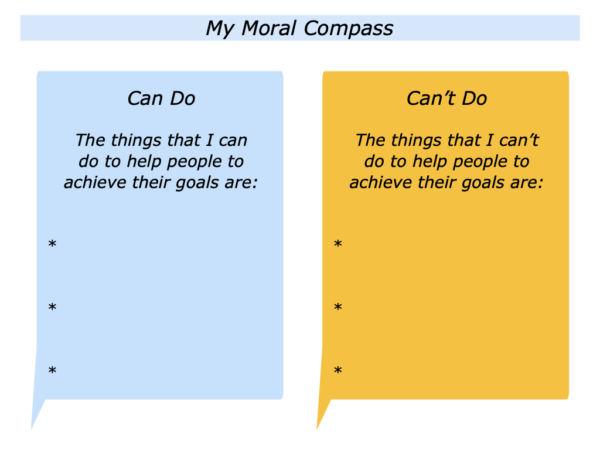
Many people want to help others in their personal or professional lives. One approach is for them to start by clarifying their moral compass about what they can and can’t do to help people to achieve their goals. This can help them:
To make a clear contract with themselves about what they can and can’t do to help people to achieve their goals;
To make clear contracts with other people about what they can and can’t do to help them to achieve their goals;
To make clear contracts about their responsibilities and the other person’s responsibilities in working to help the person to achieve their goals.
People who take this approach need to be morally comfortable with their answers. They also need to anticipate how they can translate these into action in challenging scenarios.
They can rehearse how they can do their best in specific situations. For example, how they can help individuals who want to shape their careers, manage a crisis or deal with a difficult problem.
Some people care so much that they start taking over what are actually the other person’s responsibilities. They do not know where they end and the other person begins. This does not always help.
Imagine that somebody has asked for your help in working to achieve a goal. Much will depend on the specific situation, of course, but it can be useful to clarify what you can and can’t offer them.
Different people identify different things when exploring these themes. Looking at my own work, for example, here are some things that I can do and can’t do. You will, of course, have your own list that covers these areas.
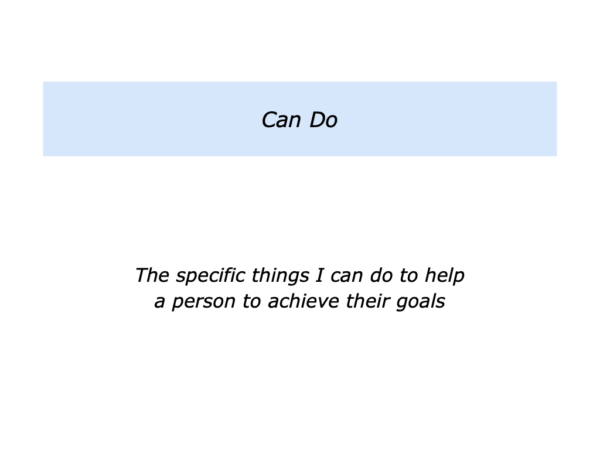
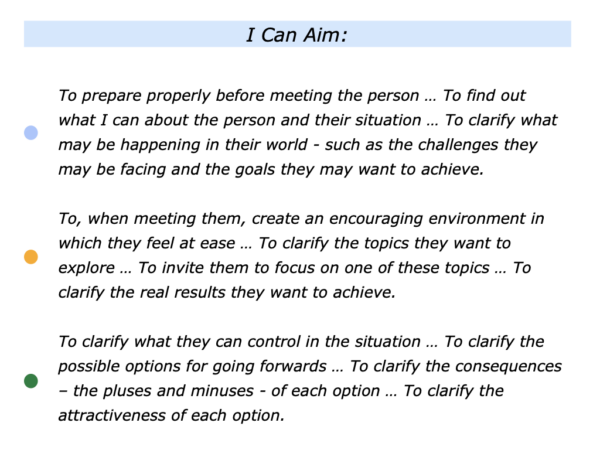
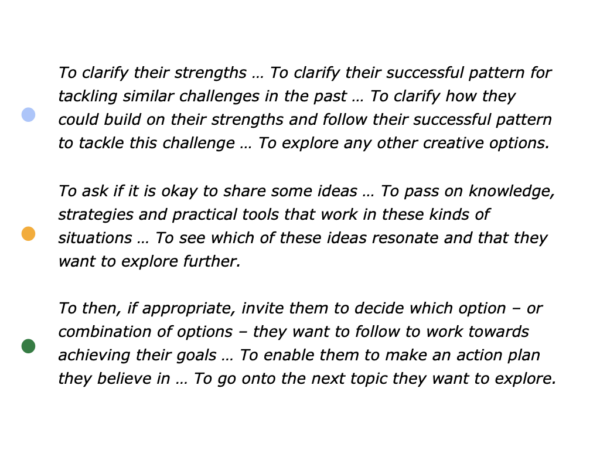
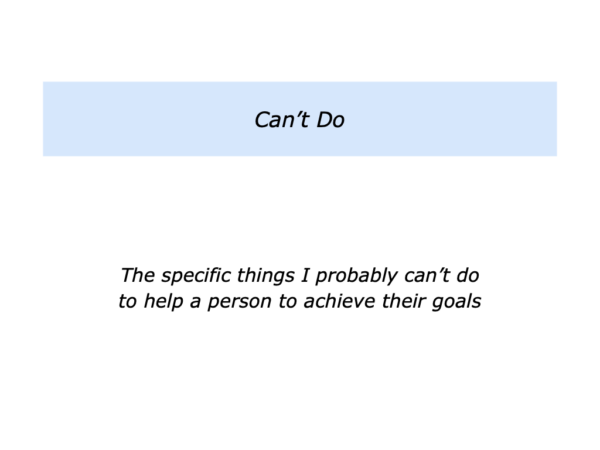
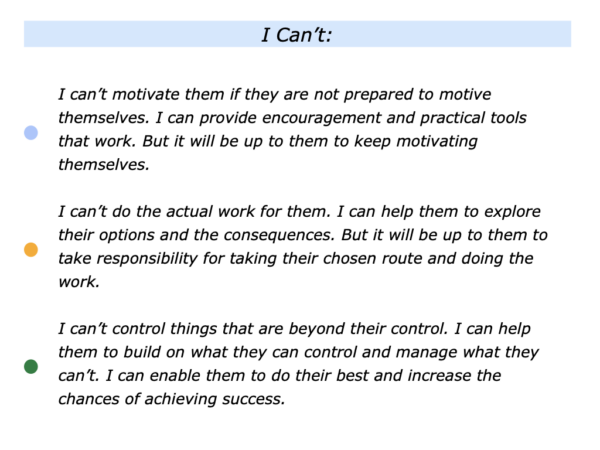
Clear Contracting Can Be Important
Clear contracting is crucial in many areas of life. This is especially so in certain kinds of helping relationships.
Good therapists, for example, recognise what they can and can’t do for a client. They also make clear contracts about their responsibilities and the client’s responsibilities in working towards the client’s goals.
This is an approach that I learned early on when working with people. After explaining the ways I could help the person, it was important to make clear contracts about the respective responsibilities in the professional relationship.
My Responsibilities Were:
To prepare properly for the sessions … To be encouraging … To clarify the person’s goals … To build on their strengths and provide strategies that work … To always behave in a professional way … To do my best to help them to achieve their picture of success.
The Person’s Responsibilities Were:
To choose to have a positive attitude towards the sessions … To take responsibility for shaping their future … To clarify their goals … To take the ideas they liked and apply these in their own ways … To do their best to work towards achieving their picture of success.
This was an approach I continued to use when working with individuals, teams and organisations in many walks of life. The aim was:
To show that I understood their picture of success .. To explain the practical ways I could try to help them to achieve their picture of success … To make clear contracts about my role and their role in working towards achieving the picture of success.
Let’s return to your moral compass. Imagine that a person has asked for your help or professional expertise in helping them to achieve their goals. Bearing in mind the goals they want to achieve, try exploring the following themes.
What are the things you can to do help the person? What are the things you can’t do? What do you see as your and their responsibilities? How can you make clear contracts about the respective responsibilities? How can you then do your best to help them to achieve their goals?
If you wish, try tackling the exercise on this theme. This invites you to complete the following sentences.
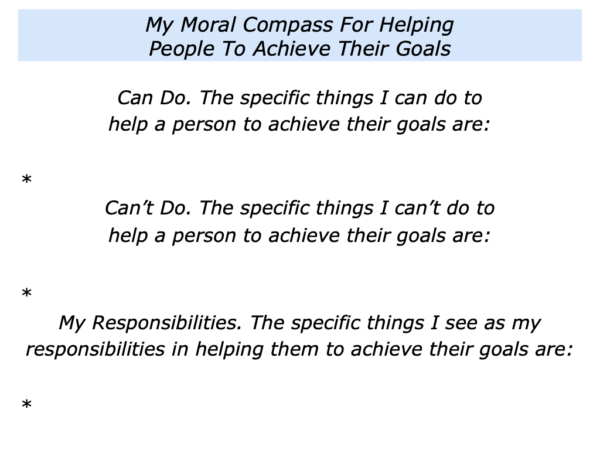
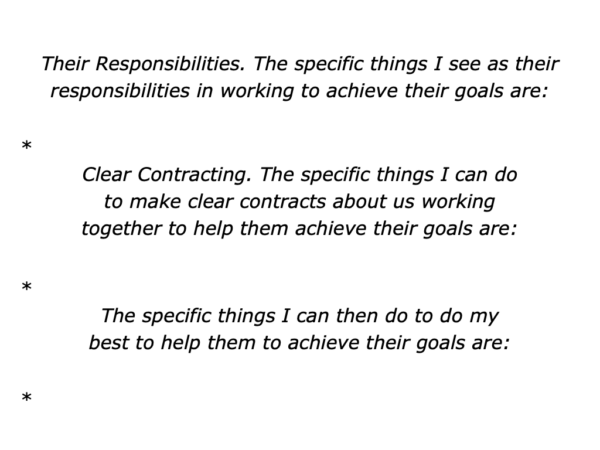






Leave a Reply